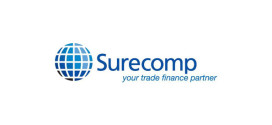New global trade flows
Profiting from the rise of Asia

The balance of global production and trade has swung back in Asia’s favour, ‘traversing another historic tipping point’. MICHAEL GUO and OLIVER DANY, of the Boston Consulting Group, look at how corporate treasurers and banks can capitalise on this fact
Until about 1800, Asia contributed approximately 50 per cent of the world’s economic output. Then, with the advent of the Industrial Revolution, Europe and North America ramped up their share of production, catapulting the West into a commanding position in global trade as well. Asia’s share of global output shrank to a meagre 10 per cent, despite the remarkable postwar success of Japan.
Now the balance of global production and trade has swung back in Asia’s favour, traversing another historic tipping point. By 2010, Asia accounted for more than 30 per cent of world trade, rising from 22 per cent in 2001. By 2020, it is expected to account for 35 per cent. That is not a short-term trend. Asia will continue to be the driver of growth in global trade for the foreseeable future.
Asia’s economic ascension is already re-ordering the ranks of the world’s top-10 trading centres. In 2001, Japan and China were the only Asian nations in that group. By 2020, six Asian trading centres will dominate the list. China will jump to the number-one position among Asian nations, bumping Japan into second place. The four others, in order, will be India, South Korea, Singapore and Hong Kong.
There is a second, equally important trend. As Asia’s trade accounts rise, the volume of global trade itself is soaring at nearly twice the growth rate of global GDP. World trade is forecast to reach $86 trillion in 2020 – more than double the 2010 total of $38 trillion and five times the 2001 total of $16 trillion.
These two coinciding trends have enormous implications for transaction banking. From 2011 to 2020, the industry’s revenue pools will leap 80 per cent, from $39bn to $70bn, driven by open-account financing and processing, with documentary collections nearly stable.
Six key trends in the evolution of global trade
But there are many devils in the details. To determine an optimal strategy, banks need to look beyond the headlines and understand six key trends in the evolution of global trade:
- The Rise of SMEs. Trade growth in Asia has spawned the rise of export-oriented small-and-medium-size enterprises. Emerging-market SMEs’ share of global trade is expected to grow to 20 per cent in 2020 from 13 per cent in 2010 — driven mostly by Asia — as their share of GDP rises. In China, SMEs already account for 78 per cent of exports. In India, their share of exports has risen to 44 per cent — a six percentage point gain in two years. Across Asia, trading partners are becoming smaller and more local. In developed countries, by contrast, SMEs’ share of global trade is shrinking\
- The Growing Importance of Commodities. Rising demand and attendant price increases will expand commodities’ share of all traded goods from 24 per cent in 2001 to 35 per cent in 2020. Oil and other petroleum-related commodities will account for 80 per cent of this increase and for 50 per cent of overall commodities trading
- New Trade Corridors. China and other emerging economies in Asia are driving trade growth. China will become Asia’s major trade centre by 2020, replacing Japan. Singapore will retain a high ranking and Hong Kong will strengthen its position as a regional hub, while India will appear on the map of major trade centres for the first time
- The Rise of Open Accounts. Growth in open-account trade continues unabated. Related finance and servicing revenues are expected to almost triple through 2020 to $30bn. Straight payments, too, are growing but will remain smaller at $13bn. The picture for letters of credit is less bright, but they are still a crucial factor in trade with and within Asia and also serve as collateral
- A Robust Growth Scenario. Several mega-trends are driving growth: a liberalised world-trade regime, labour cost arbitrage in global supply chains, low freight rates and rising demand from Asia fuelled by the increasing wealth of its middle class. Meanwhile, potential threats to trade growth, such as the risk of spreading protectionism, have not materialised despite the lingering effects of the 2008 financial crisis. Thus, even in the negative scenarios we have modelled, revenue pools are expected to grow 80 per cent between 2011 and 2020
- Increasing Complexity for Non-bank Companies. Just as banks are challenged to keep up with these broad changes, so must other companies adapt to shifts in supply and demand as well as rising complexity. Supply chains are becoming ever more complex, often involving dozens if not hundreds of suppliers spread around the globe. Many of these are among the rising class of Asian SMEs. This kind of fragmentation results in greater risk and often leads to ruptures in the financial supply chain.

Treasurers list their banking priorities
Not surprisingly, the executives most exposed to these challenges – company treasurers – are thinking hard about how to meet them. In interviews conducted by The Boston Consulting Group with dozens of treasurers regarding their banking needs, the following priorities emerged:
- Back to Basics. Treasurers place a heavy premium on complete and near-real-time transparency across accounts, transactions, and markets. There is increasing demand for transaction banks to improve data integrity and offer consolidated reporting at the account level with analytical tools to enable better risk and liquidity management
- A Flight to Trust with Rewards. Treasurers are restructuring the portfolio of banking relationships, establishing closer relationships with trusted banks and rewarding them with a larger share of wallet on transaction business. BCG’s client experience suggests that the share of wallet of core banks can be two times more than that of non-core banks
- Management of Diversity in Asia. Both Asian champions and multinational corporations are accelerating the regionalisation process in Asia in an effort to capitalise on economic growth. However, Asia is not a homogeneous market but rather has varying regulatory requirements, capital control policies and levels of sophistication and maturity. As a result, there is strong demand for harmonised regional services and technology solutions with the flexibility to manage the diverse and complex needs of different countries.
The growing power of collaboration

For banks, winning strategies will often centre on collaboration. That will require establishing partnerships across the value chain and learning to leverage open infrastructures. (See Panel)
Early movers are taking action. Some regional banks, for example, are establishing partnerships with local banks to extend their market coverage and capture the business of local clients. Forward-thinking global banks are broadening their capabilities through acquisitions or partnerships with niche financial-service companies. A number of emerging champions are forming joint ventures with large companies to create mutually advantageous ecosystems.
In the process of formulating a strategy, banks need to address several key questions. Among the initial ones are: what are the bank’s target segments and which industries does it need to support? Given the rising importance of commodities, should the bank develop specific capabilities? Other questions involve the growing wave of SMEs involved in trading. How can the bank best serve them? Conversely, how can it help domestic corporations manage their SME trading partners?
Banks also need to address questions of infrastructure and capabilities. Given its targets, what footprint does the bank need, especially in the new Asian trade hubs? How well are the bank’s product suite and technical capabilities tuned to meet the demands of its target segments?
Finally, based on the answers to these questions, banks must determine their optimal platform. Should they build or buy, and where should they partner or offer white-label services?
The answers to these questions will vary, depending on whether the bank is a global organisation, a regional bank from a developed market, a local Asian bank, or an emerging Asian global challenger.
Global, regional and local Asian banks
Global banks. These banks are investing heavily in expanding either organically or through partnerships or acquisitions. They have some inherent strengths but also face challenges.
For example, their global footprint and local presence — either direct or through partnerships — coupled with typically strong capabilities in their capital-markets divisions enable them to excel in serving multinational corporations and building commodity-specific services. Yet their very reach is a potential Achilles’ heel. Corporate business is often very local, in terms of both presence and product requirements. Managing the trade-off between a global footprint and regional and local peculiarities will be a constant challenge. But therein lies the mutual advantage of partnerships between global and local or regional banks. The infrastructure of global banks makes them attractive to local banks, while local banks can provide global banks with transaction flow and access to local SMEs.
Regional banks from developed markets. The growth opportunities for these banks, which face sluggish growth at home, lie in meeting the demands of their export-oriented domestic client base. This entails a few strategic imperatives.
First, regional banks from developed markets will have to partner with local banks as a defensive play in order to provide access to local payment systems and local client knowledge for better compliance. Partnering with credit insurers could mitigate the risks associated with local SMEs.
Secondly, they must integrate cash-management and trade-finance offerings through enhanced data-mining capabilities in order to assess buyer-supplier relationships. And they must price credit dynamically and rate based on experience, connecting seamlessly with third-party platforms to extract supply-chain-status information and update financial risk and payment status.
Finally, they must leverage open platforms such as SWIFT, to enable the strategy outlined above and to establish a level playing field on which to compete against the proprietary platforms of global banks.
Local Asian banks. These banks are well positioned to capture both the SME opportunity and local niches in commodities or other industries. To succeed, they must establish partnerships with global and/or regional banks in order to gain international access as well as sophisticated products and platforms with which to meet the international needs of local companies. In addition, they must access regional services and product offerings by either joining a proprietary platform or participating in a multi-bank open platform.
Emerging Asian global challengers.
In theory, these banks are in the best position to benefit from the rise of Asia. Yet few of them have either strong expertise in international trade and its products or their own platforms. To succeed, emerging Asian challengers are likely to have to expand their geographic footprint and client coverage through organic growth and partnerships with other regional and local banks. They may also use partnerships to strengthen their international-trade and cash-management capabilities and platforms. And they will have explore potential M&A opportunities to accelerate growth. Success with M&A will require the internal capability to manage large investments, particularly the ability to integrate acquisitions and extract the relevant know-how.
Whatever the type of bank, the fundamental revenue levers will remain the same: follow your clients overseas, understand the increasing needs of trade-oriented SMEs, innovate or partner with innovators, and — if you have not done so already — integrate trade finance into your cash-management strategy.
No bank’s path is simple in today’s environment. One thing, however, remains certain. Whether the bank is global or regional and whether it is based in Asia, Europe, or the Americas, it must not ignore the opportunities offered by Asia’s economic rise and the expansion of global trade. n
Michael Guo is a partner and managing director in the Hong Kong office of The Boston Consulting Group. E-mail guo.michael@ bcg.com
Oliver Dany is a partner and managing director in the firm’s Frankfurt office. E-mail dany.oliver@bcg.com
The benefit of embracing a non-bank rival
In the traditional trade ecosystem, three players shared in the financial supply chain: buyers, suppliers, and banks. As the trade services and finance needs of companies grow and become more sophisticated, non-bank providers have emerged.
There are generally four types of these new competitors:
- financial-supply-chain providers offer a full range of automated solutions, from purchase orders via document handling and invoicing to payments
- supply chain financiers focus on financing based on the trade goods in transit
- business-to-business payment and invoicing providers specialise in outsourcing solutions for SME treasuries. Several of these are reaching high adoption rates among multinational corporations
- credit insurers build on their local knowledge of the market and clients, often in more remote regions and among smaller clients. They thereby exploit the increasing importance of SMEs in global trade.
These new providers can be seen as competitors, but they also offer banks the opportunity for “co-opetition” – co-operation and collaboration with a competitor when that is advantageous. “Co-opetition” can be especially advantageous to regional champions and domestic banks. Non-bank credit insurers, in particular, can provide banks with access to new sets of customers that would otherwise be out of reach.
 Cash And Trade Magazine For Cash and Trade professionals in the Middle East
Cash And Trade Magazine For Cash and Trade professionals in the Middle East




